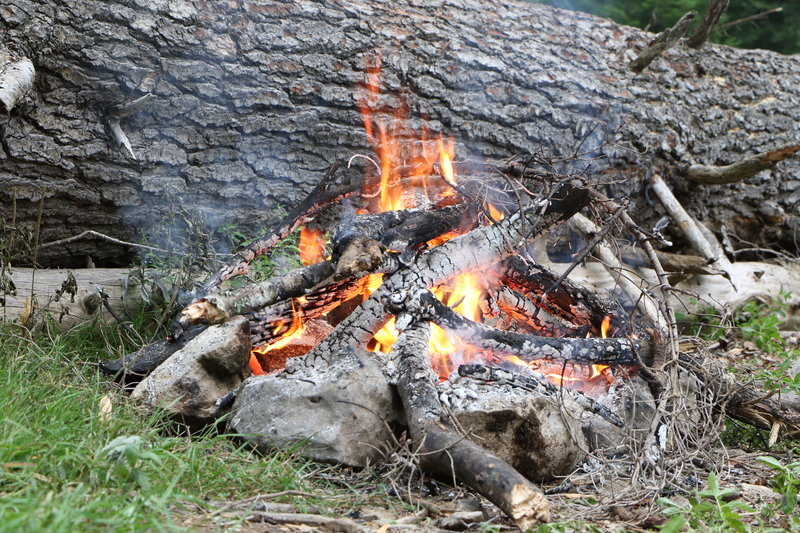In the perfect scenario, all you have to do is pile up a bunch of brush and wood, light it and your survival fire is ready to go!
In the real world, the type of wood you put in your fire can make a big difference in the type of fire you get and how it can be used.
Experienced campers know how to pick the right wood to build a fire and they follow this rule:
• Softwoods (such as cedar) are great for starting fires
• Hardwoods (such as oak) are ideal for sustaining a fire and build reliable cooking fires
• Resinous woods (such as pine) can be used to make signal fires and are good for campfire. This type of wood is not recommended for cooking.To pick the right wood to build a fire, you can rely on two types of trees:
1. Coniferous – The types of trees with needles that lose said needles all year long and replace them with new ones.
2. Deciduous – The trees with leaves that lose said leaves every year.
Here are some tricks I’ve learned from other bush craft and survival enthusiasts:
• Stay away from coniferous trees. Use them only to light the initial fire.
• Don’t feed coniferous to your fire unless you plan to smoke your meat.
• To establish if non-birch deciduous trees have softwood or not, split a wood piece and try to impress your fingernail into the wood. If it leaves a mark, it’s softwood.
• Deciduous soft woods should be used only to start a fire.
• For better cooking fires and lasting coals use deciduous hardwoods.BTUs and other considerations:
10,000 BTU will boil 8 ounces of water in about 2 minutes.
Types of wood to burn as fuel:
Maple: BTUs(million) per cord: 25.5 Ease of splitting: Easy Smoke: Low Spark: Few
Red Oak: BTUs(million) per cord: 24.6 Ease of splitting: Hard Smoke: Low Spark: Few
Spruce: BTUs(million) per cord: 15.5 Ease of splitting: Easy Smoke: Medium Spark: Many
Sycamore: BTUs(million) per cord: 19.5 Ease of splitting: Hard Smoke: Medium Spark: Few
Silver maple: BTUs(million) per cord: 19 Ease of splitting: Difficult Smoke: Low Spark: Few
White Oak: BTUs(million) per cord: 29.1 Ease of splitting: Hard Smoke: Low Spark: Few
Willow: BTUs(million) per cord: 17.6 Ease of splitting: Easy Smoke: Low Spark: Few
When you want to bake or roast using coals, here is how you can properly tell if the fire is strong or weak:
Place your hand above the coal bed, right where the cooking level would be and start counting seconds. Do so while you can comfortably hold your palm down toward the fire. The number of seconds will tell you how strong the fire is.
Five seconds means a low heat, 4 seconds a medium one, 3 seconds a medium-high heat while 2 seconds means there’s a high heat.
The wood you select makes your survival fire – mismatch it and you can end up with a mess that does not do what you want!
Match it well, though, and you can build a fire that meets all your needs and ensures you have an edge in a survival situation.
To learn more about building a fire and the wood to select, check out Prepper’s Will.
